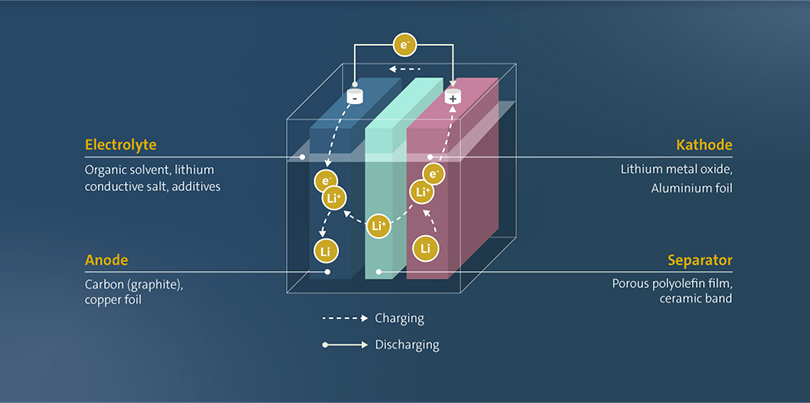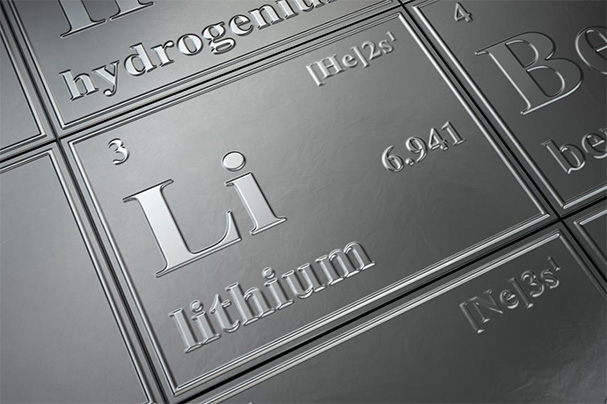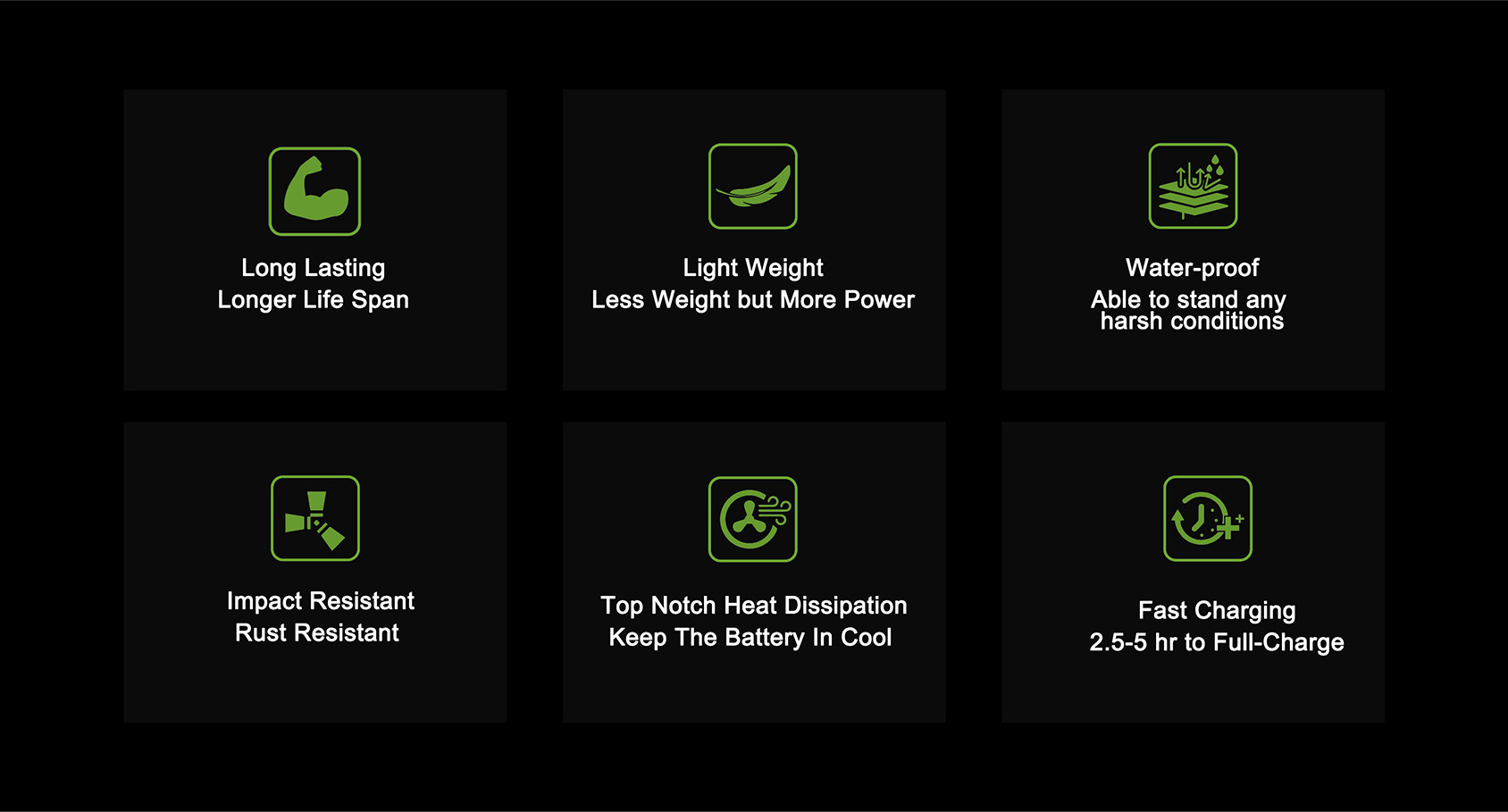BNT's Green Li-ion battery recycling technology
produces 99.9% pure battery cathode.

What is Lithium-Ion Battery?
Lithium-ion battery nomenclature is used to describe multiple power storage units consisting of multiple lithium-ion batteries. Lithium-ion battery,
on the other hand, is a type of power storage unit produced with lithium-ion alloy. Lithium-ion batteries consist of four basic components: cathode
(positive terminal), anode (negative terminal), electrolyte (electrical conduction medium) and separator.
For a lithium-ion battery to work, an electric current must first flow through both ends. When current is applied, positively and negatively charged
lithium ions in the liquid electrolyte begin to move between the anode and the cathode. Thus, the electrical energy stored inside is transferred from
the battery to the necessary equipment. This enables the device to perform all the functions of the device, depending on the power density of the
battery/battery.

What are the Lithium-Ion Battery Features?
>It is a type of rechargeable battery.
>It can be carried easily due to its small volume.
>It has a high power storage feature compared to its weight.
>It charges faster than other types of batteries.
>Since there is no memory effect problem, there is no need for full filling and use.
>Its useful life starts from the date of manufacture.
>Their capacity is reduced by 20 to 30 percent each year in case of heavy use.
>The time-dependent capacity loss rate varies according to the temperature in which it is used.
What are the types of batteries used ?
There are more than 10 battery types that have been tried and developed in electric vehicles to date. While some of them are not preferred due to their safety problems and rapid discharge features, some are not widely used due to their high cost. So let’s take a look at the most prominent of them!
1. Lead Acid Batteries
It is one of the first types of batteries used in automobiles. It is not preferred today due to its low nominal voltage and energy density.
2. Nickel Cadmium Batteries
It has a higher energy density compared to lead-acid batteries. It is difficult to use in electric vehicles (Electric Vehicles: EV) because of its rapid self-discharge and memory effect.
3. Nickel Metal Hydride Batteries
It is an alternative battery type produced by using metal hydrate to offset the negative aspects of nickel-cadmium batteries. It has a higher energy density than nickel-cadmium batteries. It is not considered suitable for EVs due to its high self-discharge rate and security vulnerability in case of overload.
4. Lithium Iron Phosphate Batteries
It is safe, high-intensity and long-lasting. However, its performance is lower than that of lithium-ion batteries. For this reason, although it isfrequently used in electronic devices, it is not preferred in EV technology.
5. Lithium Sulfide Batteries
It is a type of battery that is also lithium-based, but instead of ion alloy, sulfur is used as the cathode material. It has high energy density and charging efficiency. However, since it has an average lifespan, it stands in the background compared to lithium-ion.
6. Lithium Ion Polymer Batteries
It is a more advanced version of lithium-ion battery technology. It exhibits approximately the same properties as conventional lithium batteries.
However, since polymer material is used as electrolyte instead of liquid, its conductivity is higher. It is promising for EV technologies.
7. Lithium Titanate Batteries
It is the development of lithium-ion batteries with lithium-titanate nanocrystals instead of carbon on the anode part. It can be charged faster than lithium-ion batteries. However, the lower voltage of lithium-ion batteries can be a disadvantage for EVs.
8. Graphene Batteries
It is one of the newest battery technologies. Compared to lithium-ion, the charging time is much shorter, the charge cycle is much longer, the heating rate is much lower, the conductivity is much higher, and the recycling capacity is up to 100 percent higher. However, the charge usage time is shorter than lithium ion, and the production cost is very high.
Why We Use LIFEPO4 Lithium Batteries For
Different Applications & What are the Advantages?
It is the type of battery with the high filling density ,Its safe and long-lasting.
It has a longer life compared to other types of batteries. They have a useful life of five to 10 years.
It has a long charge cycle (100 to 0 percent) of about 2,000 uses.
The maintenance requirement is very low.
It can provide high energy up to 150 watts per kilogram per hour.
It provides high performance even without reaching 100 percent filling.
There is no need for the energy in it to be completely depleted (memory effect) for recharging.
It is produced to charge up to 80 percent fast and then slowly. Thus, it saves time and provides security.
It has a lower self-discharge rate compared to other battery types when not in use.

BNT Lithium-Ion Battery Technology ?
IN BNT WE DESIGN BATTERIES TO BE :
1. Longer Life Expectation
Design life is up to 10 years.Our LFP battery capacity is over 80% left after 1C charge & discharge under 100% DOD condition for 3500 cycles. The design life is up to 10 years. While the lead-acid battery will only
cycle 500 times at 80% DOD.
2. Less Weight
Half of the size and of the weight take a big load of of the turf, protecting one of customer’s most valuable assets.
The lighter weight also means the golf cart can reach higher speeds with less efort and carry more weight without feeling sluggish to the occupants.
3. Maintenance Free
Maintenance Free. No waterfifilling, no terminal tightening and cleaning of acid deposits on the top of our batteries.
4. Integrated & Robust
Impact Resistant ,Water-proof , Rust Resistant , Supreme Heat Dissipation ,outstanding safety protection....
5.Higher limitation
BNT batteries are designed to allow higer current discharge/charge , Higher cut off threshold ....
6. More Resilience
More resilience to allow users to apply batteries in different scenarios


